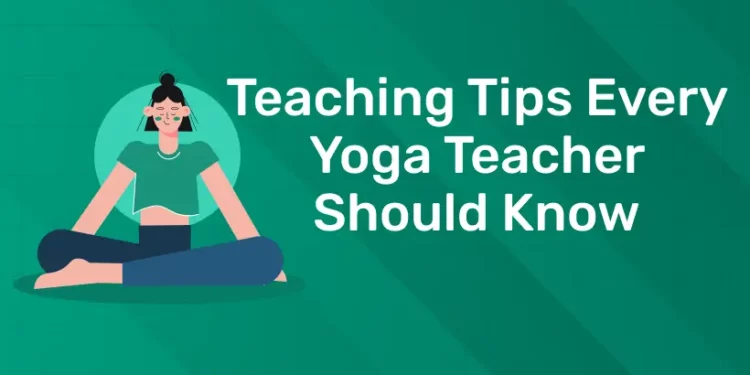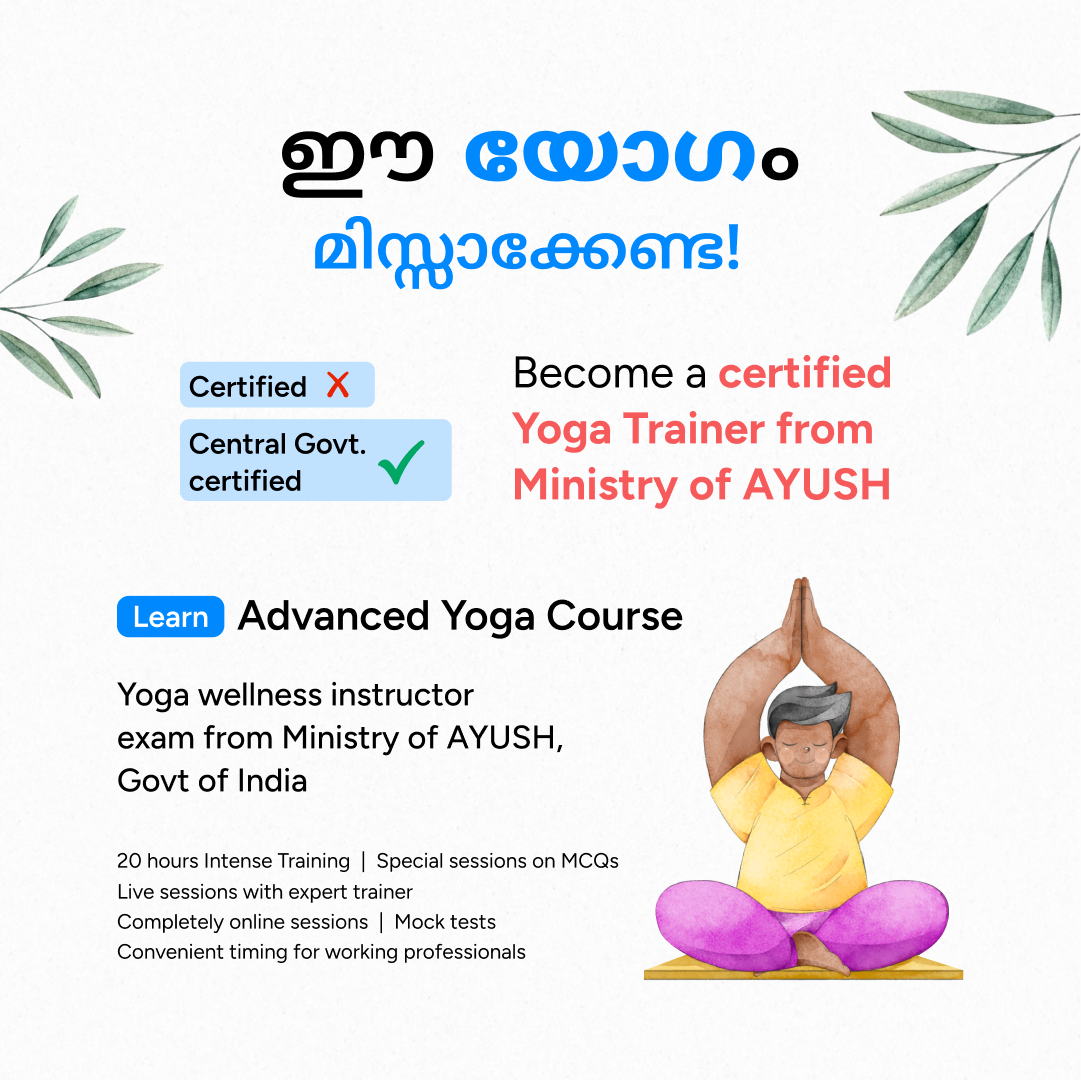Table of Contents
Being a yoga teacher comes with a lot of responsibility. It is not just teaching the poses. Becoming a yoga teacher is a life-transforming resolution that enables you to bestow the treasure of the ancient art or wisdom of yoga to others. “Yoga Teacher” is someone who is responsible for spreading yogic wisdom. To become a certified yoga instructor, participating in a Yoga Teacher Training is the first step. YTC is designed to provide the tools necessary to teach others about the ancient practice of yoga. It also teaches you to provide major lessons to your students, and trains you to become an instructor.
Yoga is not only a physical practice, but it is a lifestyle lived off the mat as well. For many students, connecting with a teacher is the necessary medium to get introduced to this kind of life.
Introduction- What is Yoga
Yoga is an ancient practice, that aims to unite body , mind and spirit. It originated in India as a spiritual practice but in the present world it has become popular as a way of promoting physical and mental well-being.
Although classical yoga also includes other elements, yogas practiced in Western countries typically emphasizes physical postures (asanas), breathing techniques (pranayama), and meditation (dyana).
There are many different yoga styles, ranging from gentle practices to physically demanding ones. This makes it challenging to evaluate research on the health effects of yoga.
Yoga is based on the Sanskrit word Yuj which means union and the ultimate goal of yoga is to achieve union.
Master the art of Yoga from Entri, Enroll now!
To teach yoga successfully, the teachers should follow the below steps.
7 TEACHING TIPS EVERY YOGA TEACHER SHOULD KNOW
1. KEEP YOURSELF BALANCED
As a yoga teacher, remaining patient and balanced emotionally, physically, and mentally is essential. This allows your students to rely on your teachings consistently from week to week, and day to day. While we aim to find balance in certain postures on the mat, there is a kind of balance that goes beyond your practice. Emotional and mental balance helps you stay positive and sensitive, capable of forming a deep connection to yourself and others. It allows you to stay present in the moment. It also greatly impacts your teaching skills, as it drives you towards being more humble and approachable.
2. DEMONSTRATE AND EXPLAIN IN DETAIL
Successful yoga teachers design a comprehensive class by building thoughtful sequences and teaching them clearly to their students. This is not limited to just the asanas, but corresponding breathwork and the anatomical breakdown of the body and message behind each pose as well. Additionally, always take every opportunity to be present in your teaching, be it watching your students and offering adjustments, or opening up about experiences relevant to your theme, etc.
3. INCORPORATE THE ART OF BREATHING
Breath is the most important aspect of any yoga practice. By bringing conscious awareness to the breath, we activate an internal, deep change and bring balance to the body and mind. A conscious breathing practice, which is known as Pranayama, should be the major part of your class that will be incorporated during both the meditation and asana segments. By introducing this to your students, you can help them learn pranayama techniques and encourage them to practice it outside the mat. This will ultimately help your students to improve their concentration, build focus, which ultimately enhances their asana practice.
4. DESIGN YOUR CLASS AROUND YOUR STUDENTS
Even after completing your yoga teachers training, there may be moments as a new teacher where a certain type of student walks into your class which you never expect and difficult to deal with. This could include a pregnant woman, a yoga beginner, someone with a specific injury, etc. Investing time into taking workshops or continued education programs will help you instruct more confidently for these kind of individuals. These classes will help you know what modifications are ideal to offer in each unique situation. They will also help you to design a pretty good sequence that includes various poses for flexibility, balance, stress-relief, muscle-strengthening, etc.
This kind of sequence should include a blend of warm-up poses, standing poses, twists, backbends, forward-bending poses, closing postures, and of course, savasana. You should also consider experience level of the students and build accordingly. Then don’t forget to add a dash of your own unique style, whether it be through music or sharing a personal story related to your theme.
Master the art of Yoga from Entri, Enroll now!
5. ENGAGE IN EFFORTLESS COMMUNICATION
You must be a great communicator for teaching yoga. It is very important to think about the different ways you address your class, whether it be speaking in a tone that everyone can hear, or pronouncing your words clearly so you are well understood. This can take practice and doesn’t always happen overnight, so practice teaching to your friends, family or even coworkers!
6. COMMIT FULLY TO YOUR OWN PRACTICE
Self-practice is something that distinguishes a good teacher from a great one. To hold space for an amazing yoga class, it’s crucial to invest time in your own practice. Inner work and committing fully to your own practice encourages you to continuously grow in your teaching. The more you show integrity in your yoga journey, the more authentic you will be to your students. Self-practice helps you connect internally and believe in yourself fully. And remember, people will only trust and believe in you once you start trusting yourself, and giving time to your own practice is the best way to achieve this.
7. ALWAYS KEEP LEARNING AND CONTINUE TO EVOLVE
Life never stops teaching us, on and off the mat. As a yoga teacher, do not stop being a student, regardless of how experienced you have become. To bring excitement to your practice and to be more innovative with your teachings, continue your education, whether it be through workshops or trainings.
Yoga teachers have the ability to be the guiding light for their students by introducing them to self-love, self-awareness and the mind-body connection. Follow these tips and your teaching will be a great one that resonates with students for years to come.
Yoga Training in Entri
1: Which of these is the primary goal of yoga practice?
Entri offers yoga teacher training for yoga students and yoga teachers alike. If you are simply thinking about taking the practice deeper and you are ready to dive into your first yoga teacher training or if you have been teaching yoga for some time and you are ready to refine and renew, we have something for you. In the practice, we will forever and always be a student first. So come learn and grow with some of Entri’s best yoga teachers, as well as renowned yoga teachers from around the country. Our yoga teacher training programs are designed to deepen your connection to yourself, your practice, and your community.
Conclusion
Research and studies suggest that there are several benefits of yoga which includes several aspects of wellness, including general wellness by relieving stress, mental/emotional health, promoting healthy eating/activity habits, sleep, and balance.
It also helps in relieving neck pain, migraine or tension-type headaches, and pain associated with knee osteoarthritis. It may also have a small benefit for low-back pain.
It helps people with overweight or obesity , it helps people quit smoking. It even helps people with chronic disease manage their symptoms and improve their quality of life.























